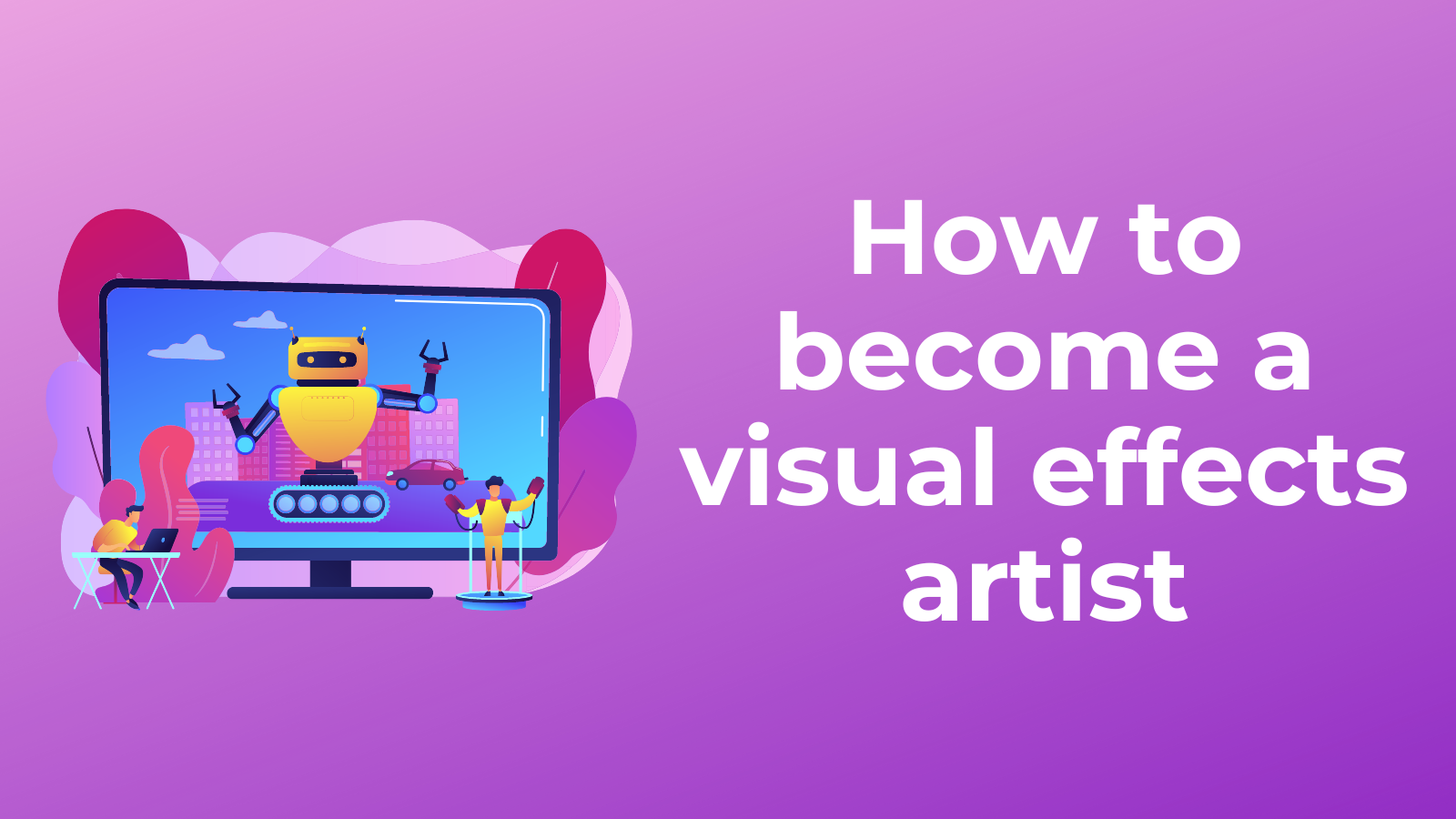 November 9, 2022 |
5 min Read
November 9, 2022 |
5 min ReadHow to become a visual effects artist
It’s the dream of many artists to become visual effects artists and get the chance to contribute to the next movie blockbuster, binge-worthy tv show, or award-winning video game. Luckily for those who love VFX, there’s a lot of support from the industry to become a visual effects artist.
Want to dive right into VFX and get access to resources from the leading developers of VFX tools and software? Scroll down to the resources section below.
What is a visual effects artist?
A visual effects artist is someone who creates digital imagery used in film, tv, and video game production. Most visual effects are created with the aid of sophisticated computer software. Visual effects help create scenes that would be difficult to create using practical effects; examples include scenes that have the appearance of being in the distant future, space travel, or large crowds of people or objects. The possibilities of what can be accomplished by a visual effects artist are almost endless.
Where do visual effects artists work?
Visual effects artists commonly work for studios in the film, tv, and video game industry. Within these industries visual effects artists will find work in specific departments like animation, art, modeling, composition, and many others.
Well-known companies that hire VFX artists include Industrial Light and Magic (ILM), Pixar, Sony Pictures Imageworks, Disney, and Electronic Arts. Studios large and small are adopting VFX in their productions providing many job opportunities for new VFX artists.
While it’s possible to find VFX in many cities around the world, there is a concentration of jobs in a few select cities. This includes cities known to be popular for film and tv production, including Los Angeles, Vancouver, Montreal, and London. If you’re not able to move to a large city, don’t lose hope. Since the global pandemic, there’s been an increase in remote opportunities for VFX artists.
Who are some famous visual effects artists?
Visual effects artistry is not a new profession and there have been countless artists who have made their mark on the industry. Many well-known visual effects artists have come from studios like Industrial Light and Magic (ILM), Pixar, and Ubisoft, and have worked on blockbuster titles like Star Trek, Toy Story, and Grand Theft Auto. Modern examples of legendary VFX artists include John Gaeta, who’s best known for inventing “bullet time,” which was used in The Matrix series of films; Paul J. Franklin, who achieved numerous box office successes and worked with Christopher Nolan on Inception; and Dennis Muren, who’s worked on legendary films like Star Wars, E.T. The Extra-Terrestrial, and Terminator 2: Judgement Day. He helped bring dinosaurs to life in Jurassic Park with computer-generated effects that have stood the test of time.
Do you need artistic talent to become a VFX artist?
It doesn’t hurt to have some natural artistic ability, if you want to become a visual effects artist, but it’s not required. All you really need is creativity and an active imagination. Well… that’s not all you need.
Today’s visual effects artists rely heavily on computers to create their designs. Because of this reliance on computers, many visual effects artists study computer science and STEM-related subjects. Not to scare anyone off of becoming a VFX artist, but there’s a lot of math and geometry that goes into visual effects.
There are schools that focus on design and have courses and programs dedicated to VFX. If you’re choosing to attend school for VFX, it’s generally a good idea to find one that has educators who have worked in the industry. This will not only help ensure that you’re being taught skills that have been applied in the field, but it also presents the biggest opportunity to network with those who are in a position to hire you once you graduate.
What are some resources to help a beginner visual effects artist?
There’s a wealth of industry support for those who want to enter the world of VFX, especially from developers of software used by studios. Many of these developers make their products available to academic users at a highly discounted rate. In many cases they make it free to students!
Here are some of our favourite academic programs from VFX software makers.
SideFX
SideFX are the makers of Houdini, a type of 3D animation software used by the world’s leading studios like Walt Disney, Pixar, Sony Pictures, and others. VFX artists love Houdini because of its procedural workflow, which helps create sophisticated simulations quickly.
Students can get Houdini for free here.
Foundry
Foundry is a software company that creates Oscar-winning VFX products. From lighting to asset creation, the company has a suite of products that tackle the toughest visualization challenges.
Students can get the Foundry suite of products at no cost here.
Substance 3D
Substance 3D is a suite of graphics programs that help create highly detailed 3D models. Students and teachers can get access to all five Substance applications with a 12-month education license.
Students can get the Substance 3D suite of products at no cost here.
Maxon One Suite
The Maxon One suite gives students, faculty, and schools access to the latest and greatest creative tools. The subscription bundle includes software to model, sculpt, and edit your 3D creations.
Students can purchase the Maxon One Suite for a small fee here.